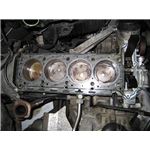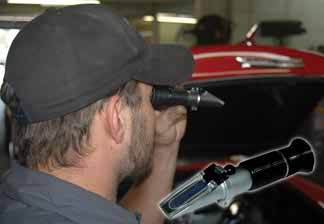What’s new on the LT855A Click Here (This video does not demonstrate new accessories)
A video by Eric the car guy
Cooling systems are vital to any car running correctly, and are often time mis-diagnosed. This is because a lot of technicians today over think it, and often times forget to check the little things. This article is aimed at the backyard mechanic or everyday do it yourselfer. It will help you to understand how to properly pressure test your vehicles cooling system. This is one of the simplest, yet most effective tests for diagnosing a cooling system.
Coolant Flush tools Uview 570000 Robinair 75700
How to properly flush your cooling system manually
Your vehicle’s cooling system can become corroded after years of use. This corrosion occurs from the minerals in your coolant collecting inside your cooling system. Some other damage may occur over time due to old age of your vehicle’s cooling system. Another damaging factor could be that your vehicle has some sort of mechanical malfunction which damaged the cooling system.
 Determining whether or not your vehicle has a blown head gasket, cracked head, or some other serious engine problem can sometimes be a difficult task. A compression test can tell you that cylinders are low but don’t always indicate what the problem is and can lead to wasted money. This article will discuss a method on how to test for a cracked head or blown head gasket. This method is extremely simple and can be accomplished in several minutes with the right tools. To understand how this method works we will have to discuss how your engine’s cooling system works. Your engine’s cooling system works by flowing coolant through a radiator and allowing air to pass through thus cooling the coolant. The coolant then travels through a hose to the engine block. The engine block has many coolant passages that flow through it. These passages flow through the block itself and through the heads. If you have a blown head gasket or cracked head, you will end up having several situations occur. The first is that you can end up burning coolant in your engine. This is not good and can lead to premature bearing failure. When engine oil and coolant mix the coolant displaces the oil and your engine lacks lubrication because in place of oil there is coolant. Another thing that can occur when you burn coolant is that you can cause a severe overheat condition for your engine. This can lead to piston’s reaching excessive temperatures and expanding and touching the cylinder walls. This will cause scoring of the cylinders and pistons. The last common problem that can occur is that combustion gases escape into your cooling system. This can cause a decrease in power, and if in excess can cause cooling system problems. With all of these problems at risk and now that you understand how your engine’s cooling system works, we can now discuss the simple procedure to determine whether or not your engine in deed has a cracked head or blown head gasket.
Determining whether or not your vehicle has a blown head gasket, cracked head, or some other serious engine problem can sometimes be a difficult task. A compression test can tell you that cylinders are low but don’t always indicate what the problem is and can lead to wasted money. This article will discuss a method on how to test for a cracked head or blown head gasket. This method is extremely simple and can be accomplished in several minutes with the right tools. To understand how this method works we will have to discuss how your engine’s cooling system works. Your engine’s cooling system works by flowing coolant through a radiator and allowing air to pass through thus cooling the coolant. The coolant then travels through a hose to the engine block. The engine block has many coolant passages that flow through it. These passages flow through the block itself and through the heads. If you have a blown head gasket or cracked head, you will end up having several situations occur. The first is that you can end up burning coolant in your engine. This is not good and can lead to premature bearing failure. When engine oil and coolant mix the coolant displaces the oil and your engine lacks lubrication because in place of oil there is coolant. Another thing that can occur when you burn coolant is that you can cause a severe overheat condition for your engine. This can lead to piston’s reaching excessive temperatures and expanding and touching the cylinder walls. This will cause scoring of the cylinders and pistons. The last common problem that can occur is that combustion gases escape into your cooling system. This can cause a decrease in power, and if in excess can cause cooling system problems. With all of these problems at risk and now that you understand how your engine’s cooling system works, we can now discuss the simple procedure to determine whether or not your engine in deed has a cracked head or blown head gasket.
 Any time is a good time to test your coolant but most important is when winter months are approaching. I know that there are many other articles on how to check your engines coolant for the proper mixture. I am not saying that any of these methods are incorrect.
Any time is a good time to test your coolant but most important is when winter months are approaching. I know that there are many other articles on how to check your engines coolant for the proper mixture. I am not saying that any of these methods are incorrect.
I am going to discuss a method in this article, which I find to be the most accurate method possible. The problem with some of the other methods such as the floating ball method is that there are many different kinds of coolants out there. This means that you have to have the exact tester for those coolants to make the gauge read accurately. Sometimes you may also be unsure what type of coolant is in the vehicle, and you then don’t know what tester to use. This can also lead to using an incorrect tester and getting incorrect reading that either say your coolant is the correct mixture when it is not, or else saying it needs more antifreeze when it does not.
The method this article is going to focus on is using a refractometer. A refractometer, such as this ATD3705 Coolant Refractometer or Robinair 75240 I have found to be the most versatile, accurate and economical way of checking cooling systems.